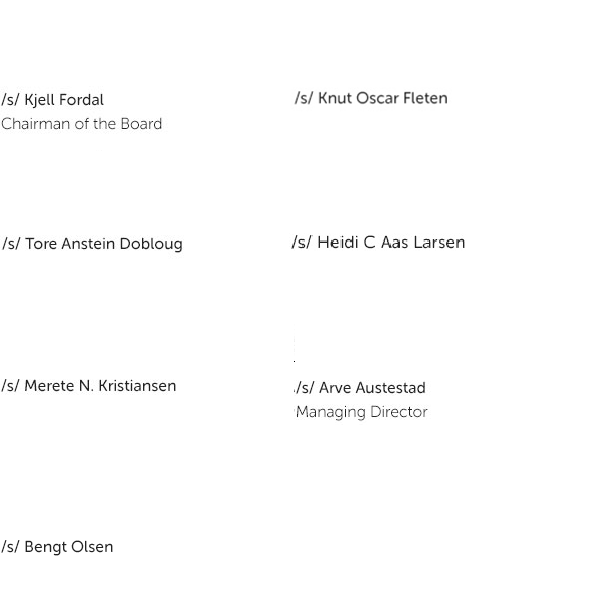Boligkreditt 2nd Quarterly Report 2021
Statement of the board of directors
SpareBank 1 Boligkreditt’s purpose
SpareBank 1 Boligkreditt AS (‘Boligkreditt’, ‘SpaBol’, or ‘The Company’) is a specialized covered bond issuer. It is regulated as a credit institution and licensed by the Norwegian Financial Supervisory Authority (Finanstilsynet) and is operated according to the legislation for covered bonds in Norway1.
The purpose of the Company is solely to provide funding for its owner banks by buying qualifying residential mortgage loans from them with a loan-to-value (“LTV”) of up to 75 percent and financing these through the issuance of covered bonds 2.
The Company, which is based in Stavanger, Norway, is owned by banks which are all members of the SpareBank 1 Alliance. A comprehensive agreement with each of these banks regulates the mortgage purchasing process and the obligations which the banks owe the Company and its mortgage customers (“Transfer and Servicing Agreement”). The Company pays out the interest margin earned to its owner banks, with deductions for estimated operating and financial expenses. This margin is accounted for as commissions to owner banks.
The Company’s issuances of covered bonds mainly take place under the EUR 35,000,000,000 Global Medium Term Covered Note Programme (GMTCN Programme). This Programme was updated on April 20, 2021 and is available on the Company’s home page: https://spabol.sparebank1.no.
Moody’s Ratings Service evaluates the credit quality of the issuances under the GMTCN Programme. The covered bonds are rated Aaa.
1The covered bond legislation is included in the Financial Institutions Act (“Finansforetaksloven”) chapter 11, section II and the detailed regulations thereof.
2The limit for instalment mortgages is 75 percent, while mortgages which have no scheduled repayment structure are limited to 60 percent. There is a regulatory minimum amortization requirement of 2.5 percent annually for new mortgages with a LTV at 60 percent or above.
Cover pool and outstanding covered bonds 2
SpareBank 1 Boligkreditt’s cover pool consists of residential mortgages and liquid, highly rated assets as well as derivatives hedging liabilities in a foreign currency and/or at fixed rates. The chart below illustrates the balances as of June 30, 2021:
The amount of liquid assets varies over time and the variation is solely a result of the Issuer’s liquidity risk management (and regulatory requirements), whereby upcoming redemptions are refinanced prior to the maturity of outstanding bonds (minimum 180 days) with bond proceeds invested as liquid assets. Liquid assets are covered bonds with a triple-A rating, SSA or government bonds with a triple-A rating or short-term cash deposits and repos (please see the cover pool statistical reports for details on the composition of liquid assets).
Derivatives are used solely to hedge currency and interest rate risk. They are tailored to exactly match the cash flows related to the bonds they hedge, for the full duration of the bond. Swap counterparties are subject to certain rating criteria and are in all cases banks other than the Company’s owner banks. Counterparties post collateral to Boligkreditt for its swap exposures, and this is included as a liability and an asset, amongst liquid assets, on the balance sheet.
3The source is the cover pool asset liability test for overcollateralization as of June 30, 2021 (see notes to the financial statements). Norwegian covered bond issuers are required by law to group derivatives as part of cover pool assets, and not together with the issued covered bonds that they hedge (liability side). This is reflected in the chart.
The table below provides an overview of the residential mortgages in the cover pool, as well as the overcollateralization.
Residential mortgages key figures 4
| Q2 2021 | Q1 2021 | Q4 2020 | Q3 2020 | Q2 2020 | |
|---|---|---|---|---|---|
| Weighted Average Current LTV (%) | 49.2 % | 51.2 % | 51.4 % | 51.8 % | 52.6 % |
| Weighted Average Original LTV (%) | 59.9 % | 59.8 % | 59.7 % | 59.3 % | 59.4 % |
| Average Loan Balance (NOK) | 1,539,309 | 1,521,007 | 1,507,205 | 1,488,367 | 1,470,921 |
| Number of Mortgages in Pool | 137,451 | 138,595 | 138,298 | 138,275 | 137,427 |
| Pct. of non first-lien mortgages | 0,0 % | 0,0 % | 0,0 % | 0,0 % | 0,0 % |
| Overcollateralization | 5.7 % | 4.5 % | 4.4 % | 4.3 % | 7.2 % |
4Overcollateralization in the table is calculated inclusive of LCR amounts within the cover pool.
.
Key developments in the first half 2021
The covered bond markets have seen less supply from many jurisdictions, creating good conditions for issuance. There is no extraordinary central bank financial support in Norway, which means covered bond market funding is sought by banks, as usual. SpareBank 1 Boligkreditt has issued NOK 12 billion at various tenors and EUR 1 billion in a 10-year benchmark covered bond during the period. Further market issuance is likely to take place in the second half.
The residential mortgage lending volume which SpaBol finances continues to increase, but at a more moderate pace compared to last year. During the first half of 2021, residential mortgages increased by NOK 3.2 billion or 1.5%
The Norwegian government is implementing the EU’s harmonization directive in covered bonds, as well as changes to Article 129 in CRR (Capital Requirement Regulation). This is expected to mean that the required regulatory overcollateralization increases to 5 percent from 2 percent. These and other changes in the covered bond legal framework, due to the EU harmonization, are not expected to be of any particular challenge for the Issuer.
Green bonds are a key element of Boligkreditt’s activities (the 10-year EUR issue in May 2021 was green), and the decision by the EU commission to plan for that the top 15 percent energy effective residential units in a market qualify for green bond issuance (constructed through 2020), is welcome. It is however at the moment unclear how an issuer can be 10 percent below the NZEB standard of energy efficiency for residential (and commercial) units constructed from 2021 onwards, so Boligkreditt plans to continue, for the time being, focusing on mortgages for the 15 percent best in class residential units, as the basis for green covered bond issuance.
Quarterly accounts
The accounts have been prepared in accordance with the International Reporting Standards (IFRS) as adopted by the EU and published by the International Reporting Standards Board (IASB).
The Board views the accounts as presented to be a true representation of SpareBank 1 Boligkreditt’s operations and financial position as of the end of the second quarter 2021. Numbers in brackets refer to the corresponding period last year for comparison.
The total balance sheet at 30.06.21 amounted to 258 (273) billion kroner. The balance sheet decreased primarily due to a decrease in the value of financial derivatives (and associated collateral), due to a stronger NOK exchange rate against EUR, and repayment of maturing debt. The Company had in the first half of 2021 net interest income of 1,157 (851) million kroner. The increase is due to a higher volume of financed mortgages and a higher margin compared to the same period last year, when variable mortgage interest rates reduced quickly due to the pandemic. Commissions paid to Boligkreditt’s owner banks were 1,022 (602) million. Changes to these commissions largely reflect changes in net interest income for mortgages financed, and represent most of the margin between mortgage interest rates and the Company’s funding costs.
The cost of operations for the first half of 2021 was 21 (20) million kroner including depreciation and amortization. The majority of operating costs are for expenses related to the Company’s bond issuances, IT operations as well as personnel related expenses.
IFRS 9 expected loan losses decreased by 13 (increased by 20) million to 17 (32) million. No actual loan losses have occurred. This produces an operating result of 59.5 (97.1) million kroner before tax. The operating result includes scheduled payments to Additional Tier 1 bondholders, which are classified as distribution to equity capital.
Mortgage loans for residential properties amounted to 212 (202) billion kroner as of the end of the second quarter. The Company’s own liquid assets were approximately 24 (17) billion kroner.
Liquid assets are cash and highly rated, highly liquid bonds being held as a function of refinancing early the Company’s upcoming bond maturities at least six months ahead of expected maturities. Liquid assets are managed to meet the 180-day minimum liquidity rule in the EU covered bond harmonization directive, and the Net Stable Financing Rule (NSFR) rule.
Risk aspects
SpareBank 1 Boligkreditt, as a licensed and regulated covered bond issuer, is subject to strict rules regarding its exposure to credit, market, and liquidity risks. This fact, and the aim of the maintenance of the Moody’s Aaa rating, means that the Company is subject to low levels of risk and places strong emphasis on risk control.
Credit Risk is defined as the risk that losses can occur as a consequence of customers and others not having the ability or willingness to meet their obligations to SpareBank 1 Boligkreditt. Because the Company buys residential mortgages within 75% of the value of the objects on which the mortgages are secured, the Board of Directors concludes that the credit risk is lower than for Norwegian banks in general.
Market risk is defined as the risk of losses due to changes in market rates, i.e. interest rates, exchange rates and the prices of financial instruments. At the end of the first quarter SpareBank 1 Boligkreditt had issued bonds for approximately 142 billion kroner in EUR, 9 billion kroner in GBP and 8.9 billion kroner in Swedish kroner, based on exchange rates at June 30, 2021. However, all borrowing and investments with a fixed rate and all borrowing and investments in a foreign currency, have been hedged by financial currency - and/or interest rate swap agreements or through natural hedges. The collective cash flow therefore matches borrowing in Norwegian kroner with floating rate conditions (NIBOR 3 months). The Company receives collateral from its counterparties in derivative agreements according to certain criteria.
The bonds held in the Company’s liquidity portfolio are mainly Nordic covered bonds and German supra sovereign and agencies (agencies guaranteed by the German government) with a triple-A rating from Fitch, Moody’s or S&P. Deposits are placed in banks with a minimum rating of A/A2. Cash is also placed in reverse repos with approved counterparty banks, with AAA rated securities as collateral.
The Company had as of June 30, 2021 only moderate interest rate risk, and immaterial amounts of currency risk.
Liquidity risk is defined as the risk that the Company is not able to meet its obligations at maturity or to finance the purchase of loans at normal terms and conditions. Liquidity risk is managed based upon a liquidity strategy approved by the Board of Directors. According to the strategy, SpareBank 1 Boligkreditt AS shall maintain a material liquidity reserve with a minimum size equal to or more than all debt maturities within the next 6 months, or to comply with the NSFR requirement as proposed, whichever is higher. The Board of Directors views SpareBank 1 Boligkreditt AS’s liquidity situation as good.
Operational risk is defined as risk of loss due to error or neglect in transaction execution, weakness in internal control, or information technology systems breakdowns or malfunction. Reputational, legal, ethical and competency risks are also elements of operational risk. The risk is assessed by the Board of Directors to be moderate.
The Company spends much time identifying, measuring, managing and following up on central areas of risk in such a way that this contributes to meeting its strategic goals. The notes 24 through 28 in the 2020 annual accounts provide further information.
Macroeconomic development and outlook 5
With the outbreak of the pandemic, Norway saw a recession in 2020, like most other countries, with GDP contracting 2.5 percent. Looking ahead, it is private consumption that will provide a boost to growth once the pandemic ends, while aggregate investment will return to growth, but is expected to be slower to pick up, i.e. in 2022. Investments within the still important oil and gas sector are seen as continuing to shrink through 2022.
New housing investment has delivered negative GDP contributions from 2018 through 2020 but is seen to be turning positive in 2021 and subsequent years. The housing market, with a high activity level in 2020 as well as relatively strong price appreciation, is likely influenced by the current low mortgage interest rates, hence more investments and construction are expected. However, with the economic growth unfolding (and forward economic indicators in a clear upswing), Norway’s central bank is now expected to embark on a tightening cycle in September 2021. This is expected to negatively impact the price level for real estate, or at least create the basis for a sideways development in the time to come. Norwegian banks are required to test mortgage customers’ ability to service new mortgage loans at a much higher rate than the prevailing market interest rate level (regulatory requirement when granting mortgages at variable rates), so higher levels of payment problems are not expected from the hiking cycle, which targets price stability at 2 percent.
Both the unemployment rate and trade contributions to GDP in 2020, show the effects of the pandemic. Unemployment increased in the travel and services sectors, and is expected to remain, even through 2022, at above 4 percent, which is higher than before the pandemic. The latest labour market data from the end of June, show a substantial improvement in unemployment rate, which probably means that the unemployment rate forecast in the table below for 2021 and 2022 will be revised down.
Summarized for a few macroeconomic indicators, the recent data and forecast for the next few years are as follows:
| Recent data and forecast (per cent) | 2018 | 2019 | 2020 | 2021 | 2022 |
|---|---|---|---|---|---|
| Mainland GDP growth | 2.2 | 2.3 | -2.5 | 3.1 | 4.1 |
| Private consumption growth | 1.6 | 1.4 | -6.9 | 5.1 | 7.9 |
| Mainland investments growth | 1.5 | 4.0 | -4.1 | 0.9 | 3.2 |
| Unemployment rate | 3.8 | 3.7 | 4.6 | 4.6 | 4.2 |
| CPI growth | 2.7 | 2.2 | 1.3 | 3.1 | 1.8 |
| Annual wage growth | 2.8 | 3.5 | 3.1 | 3.1 | 3.1 |
| Current account surplus to GDP | 8.0 | 2.8 | 1.9 | 8.3 | 9.2 |
Source: Statistics Norway (SSB) June 4, 2021
5Macroeconomic projections have been sourced from Statistics Norway as of June 4, 2021.
Future prospects of the Company
The Company has a portfolio of residential mortgage loans with an average loan to value (LTV) slightly above 50 percent, and no loans are in default. The maximum allowable level for a mortgage in a cover pool is 75 percent LTV, with amounts above that level not being eligible as a cover pool asset. There is no material volume of mortgages in the Company’s portfolio that has been granted a covid-related repayment postponement.
SpareBank 1 Boligkreditt’s residential mortgage portfolio is well diversified, albeit weighted towards the eastern, central and northern regions in Norway (with little exposure in the southwest oil-industry dominated area of Norway). Mortgage loans in the cover pool are very granular (average size of 1.5 million kroner). The banks in the SpareBank 1 Alliance are required to keep reserves of eligible (i.e. cover pool pre-qualified) mortgages in order to provide replacement assets should this become necessary (i.e. if residential price declines increase LTVs above the eligibility limit for mortgages in the pool). Such reserves in the banks are tested regularly to verify that a 30 percent decline in real estate prices leaves banks with sufficient qualifying reserves for replenishing the cover pool.
The Board of Directors views Boligkreditt as well capitalized with a capital coverage ratio of 22.3 percent against a total requirement, including all buffers, of 16.0 percent (Pillar 1) plus 0.9 percent (Pillar 2). The countercyclical buffer capital requirement was lowered from 2.5 to 1 percent in March 2020, but will increase to 1.5 percent as of June 30, 2022.
Total equity Tier 1 capital is 19.9 percent against a requirement, including buffers, of 14.9 percent. Common equity capital was 18.3 percent against a requirement, including all buffers, of 13.4 percent. It is the Company’s policy to maintain capital ratios slightly above the regulatory requirements (a management buffer). When required, additional common equity is paid in by the owner banks in the regular course of business, usually in connection with increases in transferred mortgage volume. Additional Tier 1 and Tier 2 capital is raised in the Norwegian domestic capital market.
The Board of Directors views prospects for the Company to continue to be good and stable. This is based on several elements: a strict qualifying process for loans to become part of the cover pool (bank lending practices, mortgage regulations and cover pool qualification requirements), a high degree of diversification of the mortgages in the pool, as well as the robustness of the Norwegian economy, both during the pandemic and future outlook, including the strong financial resources available to the Norwegian state to support the economy at large. The Board also bases this conclusion on the low average LTV of the mortgage portfolio, no defaults or loans in arrears, and a strong history and institutional framework in Norway for mortgage loan performance.
The Board of Directors affirms its conviction that the financial accounts present a correct and complete picture of the Company’s operations and financial position at the end of the second quarter 2021. The financial accounts including notes are produced under the assumption of a going concern.
There have been no incidents of a material nature after year-end which are expected to impact the accounts for the second quarter of 2021.
Stavanger, August 10, 2021
The Board of Directors of SpareBank 1 Boligkreditt AS



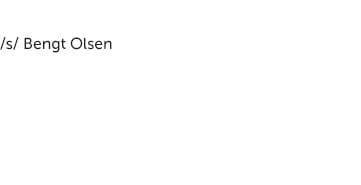

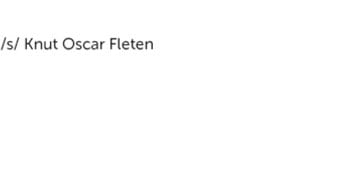

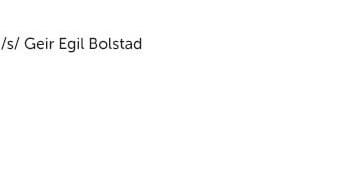

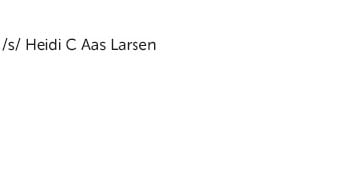

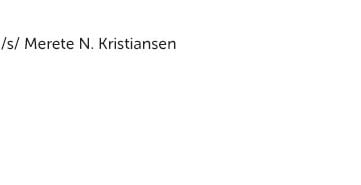
SpareBank 1 Boligkreditt AS
- Statement of the Members of the Board and the Chief Executive Officer
The Board and the chief executive officer have today reviewed and approved the financial accounts for the second quarter 2021 for SpareBank 1 Boligkreditt AS. The accounts have been prepared in accordance with the International Financial Reporting Standards (IFRS), as adopted by the EU.
To the best knowledge of the Board and the chief executive officer the accounts have been prepared in accordance with applicable accounting standards and give a true and fair view of the assets, liabilities, financial position and profit or loss of the Company taken as a whole as of 30.06.2021.
The Board of Directors and the chief executive officer declare to the best of their knowledge that the annual report gives a true and fair view of the development and performance of the business of the Company, as well as a description of the principal risks and uncertainties facing the Company.
Stavanger, August 10, 2021
The Board of Directors of SpareBank 1 Boligkreditt AS
